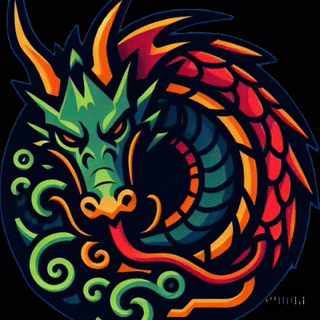The Hierarchy of Japanese Gods: A Comprehensive Exploration
Introduction
Japanese mythology is deeply rooted in Shinto, the indigenous spirituality of Japan, which reveres a vast pantheon of kami (gods, spirits, or deities). The structure of the divine hierarchy in Shintoism is complex, intertwining mythological narratives from texts such as the Kojiki (Records of Ancient Matters) and Nihon Shoki (Chronicles of Japan). This paper explores the organization of the Japanese divine hierarchy, key deities, and their roles within Shinto cosmology, providing scholarly references and resources for further study.
The Primordial Kami and the Creation of the World
At the top of the Shinto pantheon are the primordial kami, who emerged at the creation of the universe. These deities include:
Ame-no-Minakanushi (天のみなかぬし) - Often considered the supreme primordial kami, he is a mysterious god of the heavens who plays a minimal direct role in mythological narratives.
Takamimusubi (高水武神) and Kamimusubi (神水武神) - Deities of creation and life, often associated with the development of the universe.
These early deities did not engage in human affairs but laid the foundation for the celestial order and the emergence of other kami.
The Emergence of Izanagi and Izanami
The creation myth introduces Izanagi (伊尻倭) and Izanami (伊尻味), the divine couple who shaped the Japanese archipelago. According to myth, they stirred the chaotic ocean with a jeweled spear, forming the first islands of Japan. They also gave birth to numerous deities, including Amaterasu, Tsukuyomi, and Susanoo.
The Central Deity: Amaterasu, Goddess of the Sun
Amaterasu Omikami (天照大神) is one of the most revered kami in Shinto. As the sun goddess, she is the ruler of the heavenly realm, Takama-ga-hara (高天原), and the ancestor of Japan's imperial family. Her importance is emphasized in the myth where she retreats into a cave, causing darkness, only to be lured out by the laughter of the other deities. This tale symbolizes the renewal of light and order.
The Lunar and Storm Deities: Tsukuyomi and Susanoo
Tsukuyomi-no-Mikoto (月読命) - The moon god, often associated with night and order but depicted as a distant and less active deity.
Susanoo-no-Mikoto (順不見命) - The storm god, known for his chaotic and violent nature. His myths often depict him as a rebellious figure who is ultimately tamed, highlighting themes of order versus disorder.
The Earthly Kami and Nature Spirits
Beyond the major deities, the Shinto pantheon consists of myriad kami associated with natural elements, shrines, and even human virtues:
Inari Okami (稲輪神) - The god of rice, fertility, and prosperity, often depicted with foxes (kitsune).
Hachiman (八十神) - The god of war and protector of Japan.
Benzaiten (宝誓天) - A syncretic deity associated with music, water, and wisdom, linked to Buddhist influences.
The Underworld and Death Deities
Shinto cosmology also includes deities governing the underworld, Yomi (世界). The most notable is Izanami, who, after her death, became a ruler of the land of the dead. Unlike Western concepts of hell, Yomi is a shadowy realm rather than a place of punishment.
The Role of Kami in Shinto Practice
Kami are worshiped at Shinto shrines, with rituals performed to honor them through offerings and festivals. Unlike hierarchical structures found in monotheistic traditions, the relationships among kami are more fluid, with overlapping domains and varying regional interpretations.
Scholarly References and Further Reading
For those interested in deeper research, the following sources provide academic insight:
Kojiki (translated by Donald L. Philippi) - The oldest extant record of Japanese mythology.
Nihon Shoki (translated by W.G. Aston) - A historical chronicle with detailed mythological accounts.
Picken, Stuart. Shinto: Japan's Spiritual Roots - A scholarly exploration of Shinto traditions and beliefs.
Kuroda, Toshio. Shinto in the History of Japanese Religion - A critical analysis of Shinto’s historical development.
Online resources:
The National Diet Library of Japan: https://www.ndl.go.jp
The Association of Shinto Shrines: https://www.jinjahoncho.or.jp
Stanford Encyclopedia of Philosophy: https://plato.stanford.edu/entries/shinto/
Conclusion
The hierarchy of Japanese gods reflects a diverse and intricate spiritual tradition, deeply embedded in Japan’s cultural identity. From the celestial deities to nature spirits and local kami, the Shinto pantheon provides a fascinating insight into the worldview of ancient Japan. By exploring historical texts and engaging with modern scholarship, students and enthusiasts can gain a richer understanding of these enduring myths and their influence on Japanese society today.
480-366-3550 (Domain Sales)
© SDBEST LLC, 2025. All rights reserved.
Sponsorship Disclosure
Terms of Service
